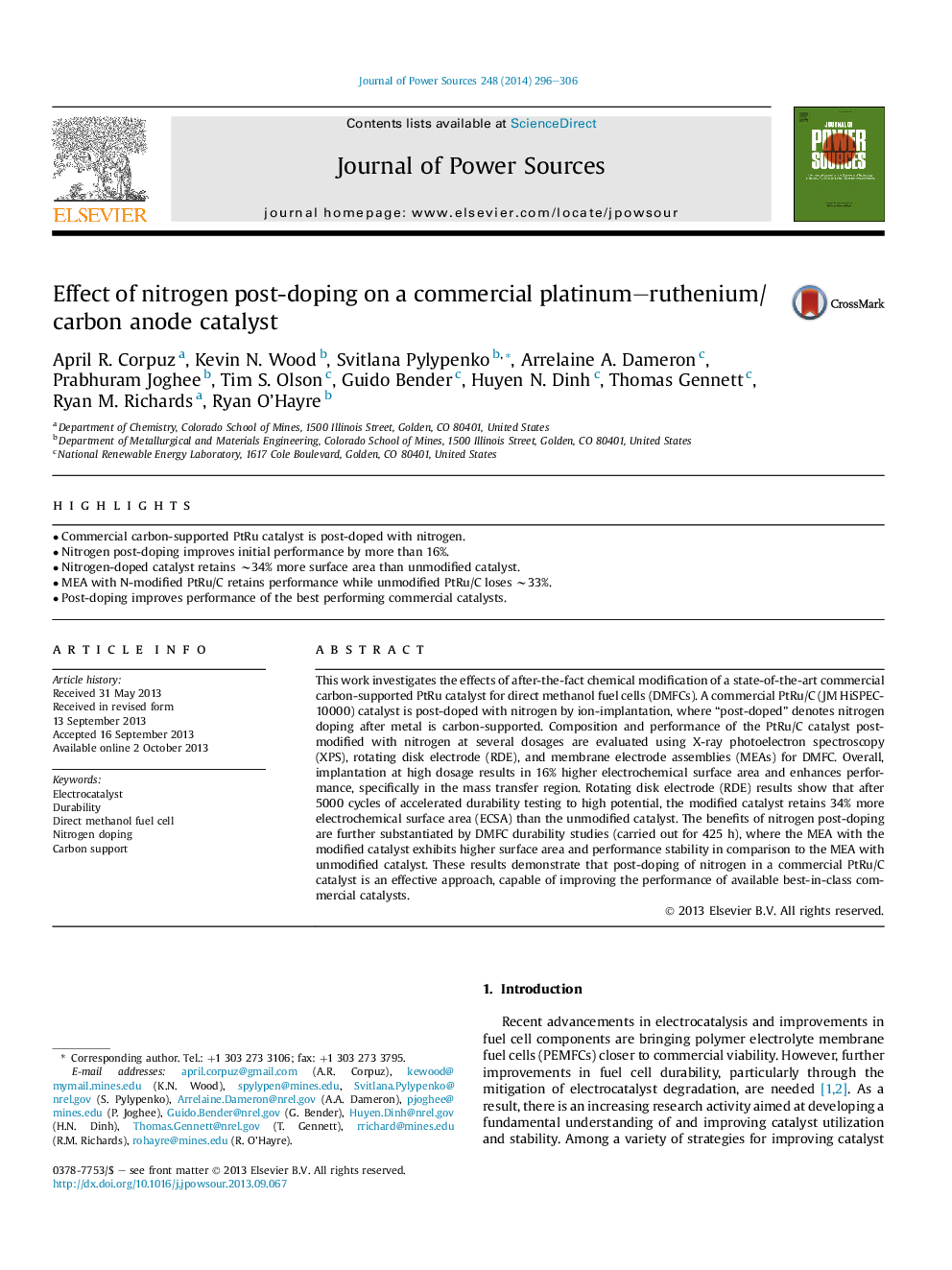| Article ID | Journal | Published Year | Pages | File Type |
|---|---|---|---|---|
| 7738191 | Journal of Power Sources | 2014 | 11 Pages |
Abstract
This work investigates the effects of after-the-fact chemical modification of a state-of-the-art commercial carbon-supported PtRu catalyst for direct methanol fuel cells (DMFCs). A commercial PtRu/C (JM HiSPEC-10000) catalyst is post-doped with nitrogen by ion-implantation, where “post-doped” denotes nitrogen doping after metal is carbon-supported. Composition and performance of the PtRu/C catalyst post-modified with nitrogen at several dosages are evaluated using X-ray photoelectron spectroscopy (XPS), rotating disk electrode (RDE), and membrane electrode assemblies (MEAs) for DMFC. Overall, implantation at high dosage results in 16% higher electrochemical surface area and enhances performance, specifically in the mass transfer region. Rotating disk electrode (RDE) results show that after 5000Â cycles of accelerated durability testing to high potential, the modified catalyst retains 34% more electrochemical surface area (ECSA) than the unmodified catalyst. The benefits of nitrogen post-doping are further substantiated by DMFC durability studies (carried out for 425Â h), where the MEA with the modified catalyst exhibits higher surface area and performance stability in comparison to the MEA with unmodified catalyst. These results demonstrate that post-doping of nitrogen in a commercial PtRu/C catalyst is an effective approach, capable of improving the performance of available best-in-class commercial catalysts.
Related Topics
Physical Sciences and Engineering
Chemistry
Electrochemistry
Authors
April R. Corpuz, Kevin N. Wood, Svitlana Pylypenko, Arrelaine A. Dameron, Prabhuram Joghee, Tim S. Olson, Guido Bender, Huyen N. Dinh, Thomas Gennett, Ryan M. Richards, Ryan O'Hayre,
